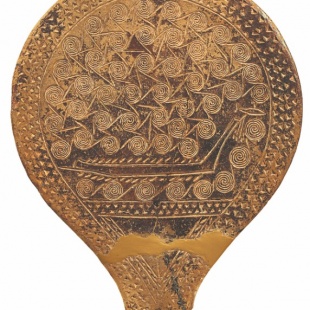Two great civilizations share a cup of knowledge


One of the exhibits that start the exhibition The Glory of the Aegean Sea at the Nanjing Museum is a tiny stone amulet with a surface area of no more than 9 square centimeters and a thickness of around 0.6 cm. Its oval contour, together with a few incised lines across its surface, reminds a viewer of a curled-up human figure or a fetus in the womb.
And that offers an apt metaphor for ancient Greek civilization, which the exhibition is hoping to shed light on through more than 270 pieces of exhibits from 14 museums and cultural organizations in Greece. The creativity and splendor spawned by that civilization means it has been viewed by many as lying at the origin of Western civilization, having exerted foundational influence on the latter in areas ranging from philosophy and science to art and literature.
It's a starting point that people in the West look back on from time to time: the Renaissance that ended the millennium-long Dark Ages was emphatically declared a revival of interest in the ideas, art and literature of ancient Greek — and by extension Roman — civilization.
For those familiar with Chinese history, that gigantic, society-wide effort, which involved among many other things the study of ancient Greek texts, might bring to mind one man: Confucius (551-479 BC). Living in the lively and chaotic time of China's Spring and Autumn Period (770-476 BC), the philosopher, long enshrined by Chinese history, advocated for his contemporaries to look back to the early Western Zhou Dynasty (c. 11th century-771 BC) as a model for moral governance and social harmony.
"It was still far too early for the two civilizations to intersect, let alone interact, but that doesn't mean parallels couldn't be found," says Guan Lin, curator of the Nanjing Museum exhibition, which is being held at the same time of another exhibition at the Shanghai Museum focusing on ancient Egyptian civilization and another one, at the Suzhou Museum, which is introducing its audience to the equally resplendent but lesser-known culture of ancient Assyria.





































